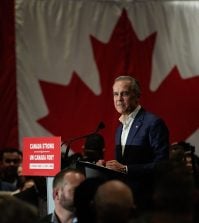Beyond pay and promotion: how governments can attract and retain staff in a fast-changing world

At a Global Government Forum webinar, public sector HR experts from the US, Canada and Singapore discussed how governments can compete in the ‘war for talent’, focusing on lessons from the COVID-19 pandemic, the importance of organisational culture that fosters belonging, and how best to measure the success of change programmes
Governments around the world are facing what has been described as a ‘war for talent’. A number of factors – including the fallout from the ‘great resignation’, a post-pandemic adjustment to flexible working, and tight public sector budgets – have combined to leave departments and agencies struggling to recruit the people they need.
A webinar held last month saw experts discuss the recruitment challenges faced by governments and how to overcome them. Here, we present snippets of the conversation, with the accompanying clips.
In her opening comments, Lauren Hunter, director of talent policy and platforms in the Office of the Chief Information Officer – part of the Treasury Board of Canada Secretariat – highlighted public sector recruitment and retention challenges, in the digital and technology sphere particularly, and also the challenges faced by government HR teams more generally.
The “massive pay gap” between the public and private sector and critical national skills shortages in digital and tech – down, in part, to the fact that many of the roles that now need filling didn’t exist a decade ago – are widely considered to be the main barriers. But what also comes into play, she added, are outdated views about staffing, employment and people’s relationships with the organisations they work for.
She described her work exploring various talent attraction models, as well as how government thinking and structures around recruitment and retention should change and whether the main issues are pay and flexibility, or something else entirely.
She pointed out that behavioural science research consistently finds that as long as people have enough to pay their bills and maintain a reasonably comfortable lifestyle, higher salaries don’t necessarily make them happier.
So, rather than looking solely at traditional incentives such as pay and promotions, she argued that governments should think “radically differently” about their value proposition. And she predicts the real value proposition over the next decade is going to be “meaning, belonging and identity”.
When her team ran experiments, she explained, the top three things that attracted candidates to apply for a job were the impact of that job, the daily tasks they would be doing, and the teams they would be working with. On impact, she said it was “hard to think about bringing meaning to your life with more rigour, more value, more depth and reach, than by being able to impact the shape of the whole country” by working in government.
What is crucial, she added, is not to sell an idea of a role or project that is different to how it will be in practice – the organisation should be authentic, and honest and transparent about the instability it faces.
The research being carried out in Canada shows, she said, that “we can make a lot of progress against some of these entrenched recruitment challenges if we approach them in a very different way”.
Peck Kem Low, chief human resources officer and advisor (workforce development) in the public service division of the Prime Minister’s Office of Singapore, offered the Singaporean public service perspective.
She said the public sector pays fairly but does not want to compete with the private sector on salaries “because there will always be someone to out-do you”, and also noted that the public sector can no longer promise officials lifelong job security – or the ‘iron rice bowl’ – due to economic volatility and other factors. Instead, it promotes itself as an employer that will equip employees with the skills to forge lifelong careers – whether in the public service or not.
“We want people to come with the right mentality and the right mindset. But what we offer is investment in you as an individual to offer you lifelong employability,” she said, adding that in line with Singapore’s ambition to be a digitally smart nation, this includes making sure “that we train you, and we prepare you and upskill you to be ready for the future”.
The public service also promotes itself as a career with “infinite opportunities” to move between agencies and specialisms, and also operates a revolving door policy whereby employees are encouraged to learn new skills in the private sector before returning to government.
“By all means go out and acquire new skills and if you want to come back, we welcome you with open arms,” Low said.
Indeed, the public sector has devised the Talent Attachment Programme in which officials are seconded to companies for six months to two years, and then return to the public sector at the end of their contact with new skills as aptitudes.
This forms part of the Singaporean public service’s increasing focus on looking “at how to be a bit more proactive, rather than reactive” to stemming attrition.
As director and chief human capital officer at the US Department of Commerce, Jessica Palatka and her team are responsible for setting human capital strategy for the department’s 13 bureaus, with the objective to help them achieve their mission and to take them from “good to great”.
Using a bicycle wheel analogy – Palatka is an avid triathlete – she said that for a wheel to work effectively, all parts of it, the frame, the spokes, the chain, the tyre, have to be strong, just as all parts of a human capital strategy have to be strong if it is to be successful.
“So individual strategies on talent, learning and development, equality, inclusion, accessibility, they each need to be robust in their own right,” she said.
She said the federal government offers what it calls the “three Rs” – recruitment, relocation and retention – to help it increase its competitiveness. It pays people to relocate for a job and offers financial incentives such as sign-on bonuses and retention bonuses, as well as paying off student loans, for example. There are also government-wide learning initiatives “that enable continuous learning and upskilling and reskilling and easily accessible opportunities for both personal and professional growth. So, we really try to support our employees’ career journeys”.
This is underpinned by data, metrics and continual process improvement, and linked to that, what Palatka called “tactical operational inputs” such as workforce data analytics and analysis, for planning purposes. “To keep my wheels turning, I study the past. And I do that through data so that I can prepare for the future,” she explained.
She moved on to the COVID-19 pandemic and its effect on employees. “The pandemic really impacted all our employees in so many different ways… employees became ill, their family members became ill, they lost family members, they lost jobs or their significant others lost jobs, there were economic impacts, and the employees that are coming back to our offices are no longer the employees we had pre-pandemic,” she said.
Therefore, to suggest that workforce culture is the same now as it was before coronavirus hit is a “gross miscalculation”. As such, Palatka said “we really have to relearn our employees’ priorities and motivators” to be able to “transform that overall culture”.
At the Department of Commerce that means “finding a new normal” and creating an environment that is more flexible and adaptable. As part of this, Palatka and her team revamped recruitment practices and came out with a 2022-2026 strategic plan – informed by learnings from the pandemic – which centres on six strands:
- Attracting, recruiting, hiring and retaining talented and diverse employees
- Improving hiring processes and pipelines to reduce hiring time and vacancy backlogs
- Making the department’s work environment more accessible, inclusive and engaging as part of a hybrid work model
- Building a pipeline to develop managers and senior executives
- Developing and growing current federal employees and their skillsets to adapt to the department’s changing priorities and missions
- And creating a workforce that is more agile, including facilitating people’s moves from public to private sector and back again
She pointed out that according to the Bureau of Labour Statistics, the average tenure of public sector workers is about seven years – higher than retention in the private sector, which is about three and a half.
One of the main reasons for this, she said, is mission: “The government offers employees the opportunity to do work for the greater good”. Stability is another factor. Though Palatka admitted that it isn’t “a great statistic”, three out of four employees in the federal government are 35 or older, meaning they’re more likely to have families to support and mortgages to pay and, as such, require a stable career. And then there is transferability – allowing people to move between public sector jobs, whether in the same department or another department, and make career changes without having to leave government. “That’s really appealing,” she said.
Summarising, Palatka said that creating a human capital strategy has to focus on diversity, equity, inclusion and accessibility (DEIA), the ‘three Rs’ she mentioned, by learning and development opportunities, and by pathways for advancement. “That’s vital to strengthening the US government’s future”.
“In this changing environment, in this changing world, learning from the past to help us build resilience and agility for the government, is only going to help us build organisations that are going to be able to attract talent for years to come.”
Following their opening comments, panellists took questions from the webinar’s live audience. The first asked whether a government organisation’s values holds the same weight as they used to when now, people can choose to work for private sector companies that are also highly values driven.
Hunter said that more values-driven private sector businesses is “a good problem to have” and socially “for the good overall” but said that in Canada, there aren’t many companies that offer high salaries and which are also focused on good as a mission, whether that be environmental, for example, or otherwise.
She came back to her point about trust and culture. In an experiment, she and her team found, through behavioural analysis, that when people applied for jobs that offered flexi work, they didn’t necessarily need a flexible working arrangement. Instead, they were “screening for managers that placed trust in their teams”.
Palatka said that experiments in the US had shown similar results – that individuals are often looking for what she called “their own hierarchy of needs” over what they might find in a vision or mission. So, for example, flexibility, agility, and opportunities to train and reskill. Given the current economic climate, people are “really looking for that self-preservation,” she said. “So, while the values are important, do I think that they are necessarily the driving factor right now? No. I think that there are socio-economic impacts that are a little bit more important.”
Another question focused on whether, post-pandemic, there has been a big re-evaluation of what people are looking for now and what will make them happy in their careers.
“Absolutely,” Palatka said. What she and her colleagues see as the “great relearning” is that the biggest flaw organisations are making is to assume what it is their employees want. For her, what is important is to determine what people’s changing needs are and reform organisational culture based on the findings. At the commerce department, this has included rethinking the childcare services available to employees – because the pandemic resulted in people “wanting their children closer to them” – and installing a gym within the building so people continue exercising in the way they had during the pandemic.
Hunter said that, globally, the pandemic had had a “lasting psychological impact” and made people aware of their “own human vulnerabilities”. As such, people now want to work in a place “where someone’s got their back”. There are going to be more sick days, there are going to be days when mentally, “we’re just not up for it” and where “we’re going to lose motivation”, and as such, there needed to be flexibility. In addition, strong teams need to be built so that colleagues can be picked up and supported when needed. “I think this is really where the value is going forward,” she said.
Though pay is perhaps less of a motivating factor for workers than it once was, the conversation moved on to whether it was still a key draw in certain sectors, such as digital and tech.
Low said that civil and public services would be naïve to think that there isn’t a need for pay differentials, and that certain tech specialists – those in cybersecurity, for example – were highly sought after and might therefore command higher pay.
Coming back to what had come about as a result of the pandemic, Low said given that remote and hybrid work is now much more common, there had to be an emphasis on trust and empowerment. Managers should trust that their team members are working from home effectively and check in to ensure that they aren’t working too many hours, that they are remembering to take breaks, and are getting time to rest. What much of it comes down to, she summarised, is showing care.
Other questions focused on comparing public sector retention rates to private sector retention rates; how government departments and agencies could understand how they are perceived by job candidates; and how data and KPIs could be used to track the success of change programmes.
Answers from the three panellists centred on why attrition isn’t always a bad thing; the importance of valuing people’s desire to move between sectors; the US’s “very clearly defined” and transparent performance metrics; and why if departments want to know how they are perceived, as Hunter said, “all they have to do is ask. And I don’t think we do that a lot in government, because sometimes we actually perhaps don’t want the answer”.
“We want to talk about vacancy rates and retention rates and turnover and the number of processes and the number of applicants, but we do need to ask what’s attracting people”.
To learn all this and more, you can watch the full Battle for brains: how can public services compete in competitive recruitment markets? webinar on our dedicated events page. The webinar, hosted by Global Government Forum, was held on 26 January 2023.
Want to write for GGF? We are always looking to hear from public and civil servants on the latest developments in their organisation – please get in touch below or email [email protected]























